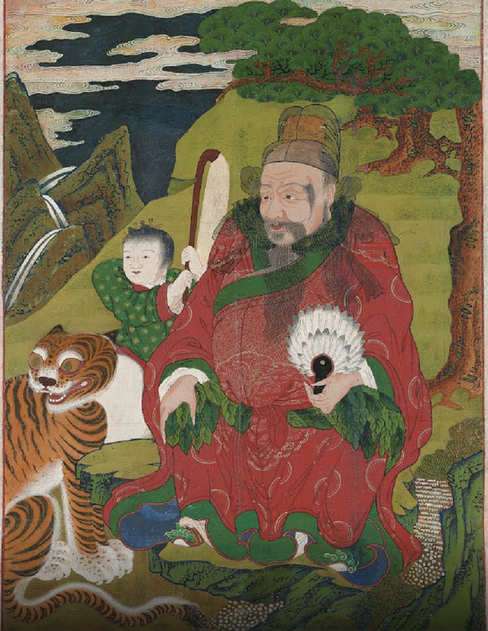[Art/Culture/History] THE LEGEND & SYMBOLISM OF THE KOREAN TIGER
- DENHOLM HEWLETT
- May 16, 2023
- 2 min read
Updated: Dec 18, 2023
The story behind how Korea's ancient mythological veneration and infatuation with the Siberian Tiger led to centuries of incredible outsider folk artworks of the illusive animal and ultimately led to the extinction of the entire species in Korea.

The symbol of the Tiger is deeply intertwined with Korean history, with people and culture serving as the foundation for ancient Korean mythology and folklore, evident in the Myth of Dangun, where a Tiger plays a prominent role in the birth of the Korean Civilisation. The endless legends and mystical tales surrounding these spiritual and majestic apex predators remains a favourite subject of Korean art, literature, painting and sculpture.
From the dawn of ancient times right through the Joseon Dynasty (1392-1897) Tiger's have been revered and celebrated by the Korean people in various ways. In native Korean religion, Tigers are worshipped as the gods of nature and depicted though art as a guardian deity of the mountain gods or as the ancient spirit of Buddhism funerary traditions and folklore.

The expansive mountainous landscapes of ancient Korea were once home to a thriving Tiger population, they became so synonymous with Korea that the country became known as the "Land of the Tigers", or "Land of the exceptional people who know how to tame the Tiger", which is a clear indication of the close relationship between Korean people and Tigers
In traditional Korean art, the typical ferocious roar of the Tiger is never depicted, despite their huge glaring eyes and bared teeth, tigers are shown with either a stern and benevolent expression, in an elegant stance, or in a more surreal or comical fashion, painted with deranged eyes and a mischievous fanged grin, or smoking a pipe with a gang of white rabbits.
Korean art portrays the tiger as magnanimous creatures of heavenly descent and auspicious superiority whose powers can expel the malice of evil spirits. This artistic style reflects the cheerful and optimistic spirit of the Korean people and their Confucian values of benevolence and true virtue.
Today there are no wild Tigers left in Korea. It was in 1922 that the last Tiger was spotted and hunted down on Mt. Daedeuk in Gyeongju, South Korea. Nowadays, there remain roughly 400 Siberian tigers (known as Korean Tigers or as Amur Tigers) left in the world, and are found mainly in Far Eastern parts of Russia and the populations are very isolated.

The overall Tiger population of the world has seen a devastating decline within the last century. As of 2019, the global wild Tiger population was estimated to number between 3062 and 3948 mature wild individuals, a significant decline from around 100,000 at the start of the 20th century.

~ Psychic Garden






































